Rainforest Gin Tonica is an Australian twist on the Spanish Gin Tonic recipe where botanicals are added as a garnish to a Gin Tonic to complement and contrast with the botanicals featured in the gin. In the Rainforest Gin Tonica, an Australian gin Brookie’s Byron Dry, featuring rainforest botanicals has been used, paired with an Australian Capi tonic and indigenous Australian botanical garnishes including finger lime, river mint and tyrant ants and lemon myrtle. The Rainforest Gin Tonica is served over ice in a balloon style stemless Gin Tonic Glass or Copa de Balon which allows the spherical pink, red, green and yellow finger lime caviar to float beautifully, along with river mint and tyrant ants and lemon myrtle. The finger lime offers a fresh citrus note, while the river mint offers a fresh mint aroma and flavour, while the tyrant ants add a subtle savoury addition with the lemon myrtle bringing a fresh citrus aroma. The Brookie’s Byron Dry Gin already has river mint and finger lime so using these botanicals as garnishes underscores and enhances these citrus and mint flavours in the gin, with the subtle savouriness of ant a contrasting note and lemon myrtle adding citrus complementing the finger limes. The Rainforest Gin Tonica creates a light pink, red, golden and pale green delicate floating world contrasting with the green of river mint and lemon myrtle and the bubbles of the tonic for a refreshing and wonderfully perfumed mint and citrus drink experience.
What is a Gin Tonica or Spanish Gin Tonic, Spanish Gin-Tonic, Spanish Gin & Tonic?
Gin Tonica or Spanish Gin Tonic, Spanish Gin-Tonic or Spanish Gin & Tonic is a Gin and Tonic that calls for ingredients of gin, premium chilled tonic and clear ice and uses garnishes including herbs, spices, and fresh and preserved fruit and vegetables to either contrast or complement the botanicals used in gin and the tonic paired with this, for more on this see Nonna Titulauri’s (2020) Spanish Gin & Tonic. Specialist premium tonic water such as Mediterranean and Indian or house made tonic syrups are used to bring specific flavours to pair with the botanicals in particular styles and varieties of gin including the notably popular London Dry Gin often featured in Spanish recipes (see Jose Andres (accessed 2021) How to make a Spanish Gin-Tonic), but also experimenting with other styles such as Old Tom, Genever, Plymouth, for more on this see Emma Janzen’s (2016) The Spanish Gin and Tonic Jumps the Atlantic and Australian Bartender’s (2015) 9 Gin Tonica Recipes for you to make.
Gin Tonica flavours, aromatics, clear ice & Copa de Balon glassware
The Gin Tonica is a visually beautiful drink served in a large Copa, also called a balloon glass or Copa de Balon, that shows off the bubbles of the tonic, clear ice, and colourful and inventive garnishes. The shape of the Copa when containing large pieces of ice also ensures the Gin Tonica remains cold and does not become overly diluted (for more on the Copa de Balon see Amy Willis (2016) What is a Copa de Balon Glass and why it is essential for a gin & tonic). The Gin Tonica is all about flavours and creating a flourish to show these off visually, but it importantly relies on the perfume or aromatics of botanicals and other fresh garnishes to create a multi-sensory experience held within the balloon of the Copa de Balon. Gin Tonicas are also sometimes served in an old fashioned glass or a large red wine glass.
Gin Tonica garnish ingredients & variations
There are many variations on the Gin Tonica which pair specific styles and varieties of gin and specialist tonic waters with aromatic garnishes, for more detail and recipes see Australian Bartender’s (2015) 9 Gin Tonica Recipes for you to make, Simon Difford’s (accessed 2021) Gin Tonica, Nonna Titulauri’s (2020) Spanish Gin & Tonic and Jose Andres (accessed 2021) The Ultimate Gin & Tonic and Emma Janzen’s (2016) The Spanish Gin and Tonic Jumps the Atlantic.
Some Gin Tonica garnish ingredients include:
- Herbs and spices: juniper berries, cardamom, pepper, cinnamon, clove, star anise, rose petals, kaffir lime leaf, ginger, rosemary, thyme, coriander, lemon verbena, lemon grass, mint
- Fruit flavours: lemon, orange, grapefruit, lime as fruit wheels, wedges and twists, strawberries, apples, watermelon, raisins, marmalade, orange bitters
- Savoury and vegetal flavours: olives, fresh chilis, cucumber, red peppers and radishes
How to make a Gin Tonica? Build in the Glass
The Gin Tonica is built in the glass over clear ice with gin added first, then chilled tonic, stirred and finally the garnishes are added by hand or using long handled culinary tweezers. Nonna Titulauri’s Spanish Gin & Tonic in Liquor.com shows how to build a Gin Tonica in the glass with a video. For how to make this Rainforest Gin Tonica variation see the stop motion and garnishing tips with photographs below for details. Simon Difford (2020) in his recipe for Gin Tonica helpfully advises add the gin to an ice filled Copa and top with tonic, stir and garnish. Glassware for Gin Tonicas may include: Copa de Balon, large red wine glass, old fashioned glass.
Measures and ratios for the Gin Tonica: A matter of taste
Jose Andres in his The Ultimate Gin & Tonic recipe and How to make a Spanish Gin-Tonic explains that in Spanish versions of the Gin-Tonic less base spirit is used than in English and American versions with a ratio of 1:4 gin to tonic being favoured, for example 1 ½ shots gin to up to 4-6 shots or more of tonic to be added dependent on ‘taste’. In contrast Simon Difford in his recipe Gin Tonica uses 2 shots of gin, with 5 shots of tonic, 1:2.5 ratio. Nonna Titulauri in her recipe Spanish Gin & Tonic calls for 2 shots gin to 4 shots of tonic, 1:2 ratio.
How is the Rainforest Gin Tonica different?
The Rainforest Gin Tonica is an Australian twist on the Spanish Gin Tonica using Australian gin, Australian tonic, and indigenous Australian botanicals for a rainforest experience with citrus and mint flavour and aroma from finger lime caviar, lemon myrtle and river mint and with savoury notes from tyrant ants. The Rainforest Gin Tonica is served in a stemless Copa de Balon or bubble glass that shows off the light pink, red, green and gold finger lime caviar and contrasting greens of river mint and lemon myrtle, tonic bubbles, and clear ice.
Australian Rainforest Gin
The Rainforest Gin Tonica uses Brookie’s Byron Dry Gin from Cape Byron Distillery with rainforest botanicals including finger lime, river mint along with others such as aniseed myrtle, cinnamon myrtle, macadamia, and native raspberry.
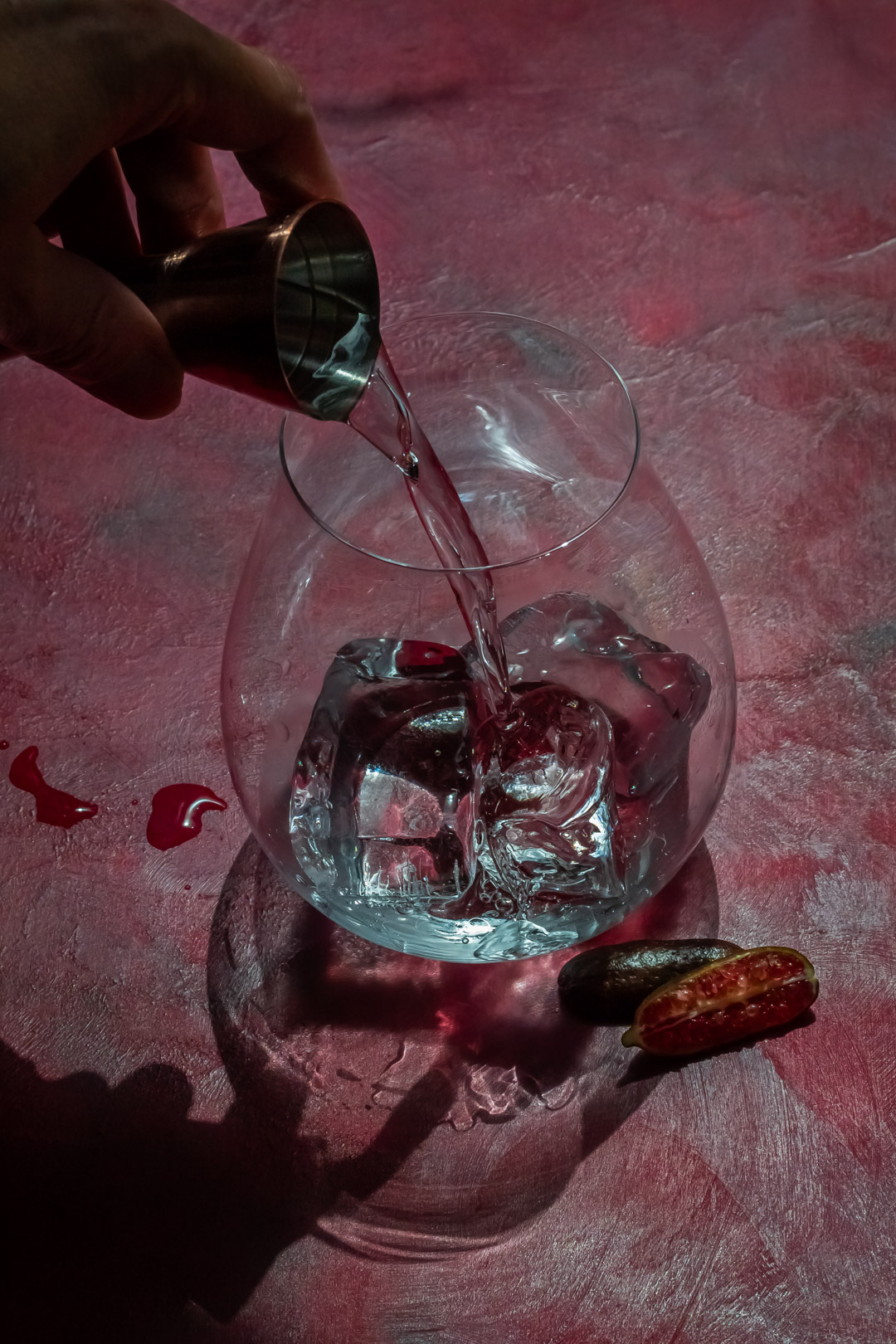
Australian Tonic Water
The Rainforest Gin Tonica uses Capi Australian tonic water featuring bitter quinine paired with citrus oils of lemon, lime, and orange. Using a premium chilled tonic adds to the flavour and bubbliness of the Rainforest Gin Tonica with the bitter quinine and citrus notes adding complexity and complementing the finger lime of the gin and garnish and the lemon myrtle garnish.
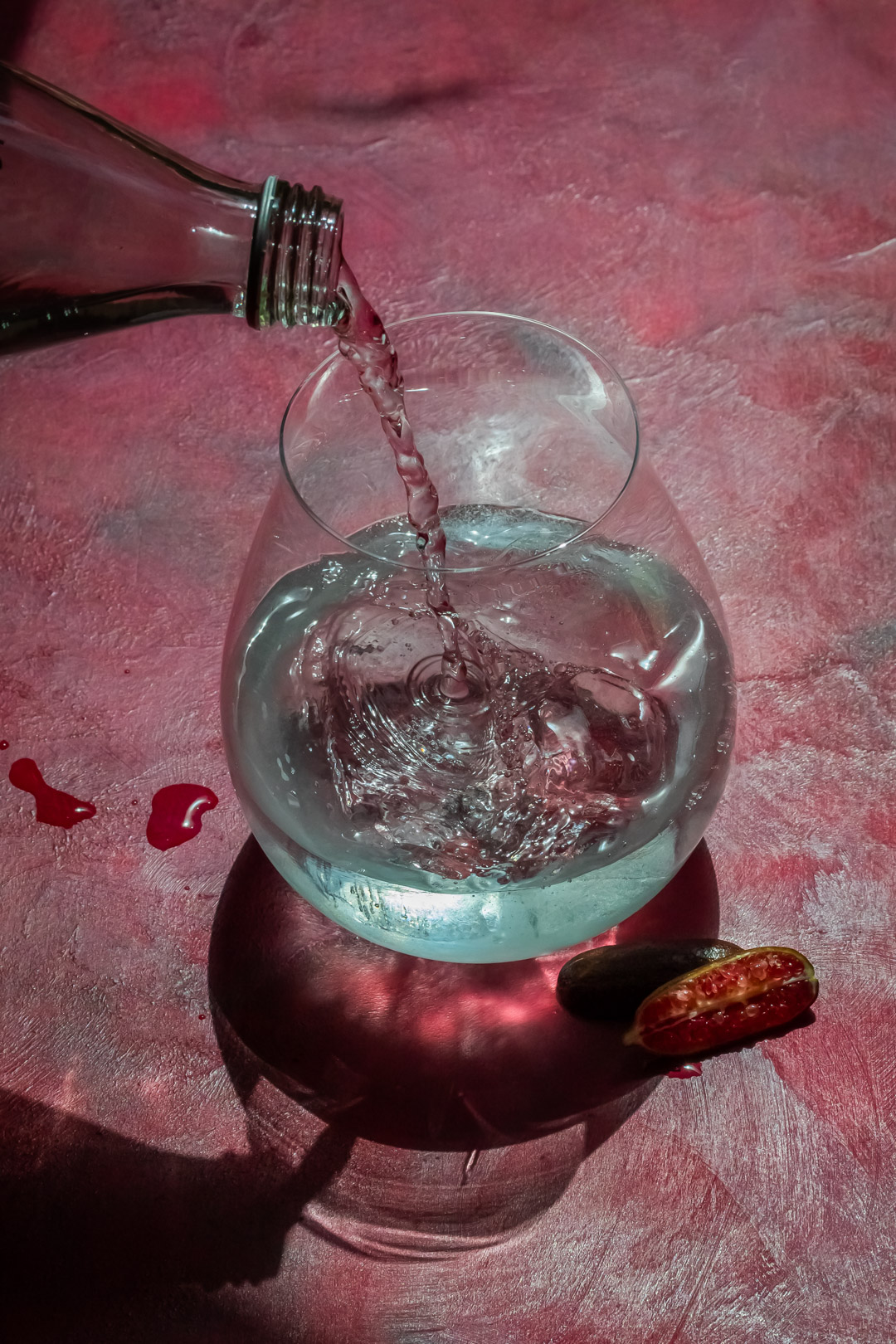
Australian indigenous botanical garnishes: finger lime caviar, river mint & tyrant ants, lemon myrtle
To garnish the Rainforest Gin Tonica I have used indigenous Australian botanicals: finger lime, river mint & tyrant ants and lemon myrtle.
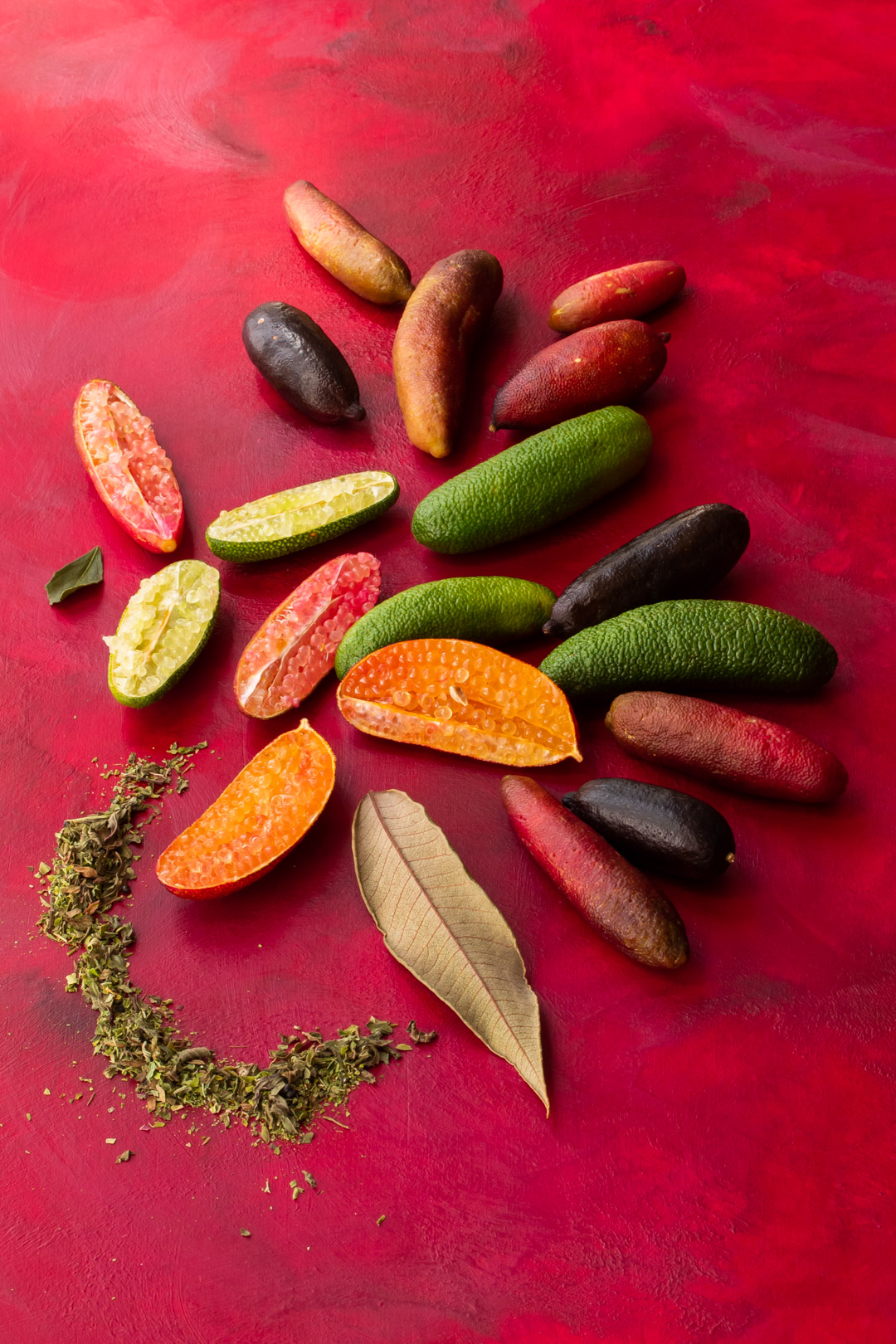
Finger lime caviar: lime aroma, caviar texture & jewel like pink, red colour, bursts of intense lime flavour
Finger lime caviar offer a heady lime aroma and intense lime flavour that connects with and reinforces the finger lime already present in the gin. Finger lime caviar also creates a visually stunning jewel like red, pink, gold and green pearls that float in the bubbly gin and tonic and offer texture with intense bursts of lime flavour. The finger limes are mixed varieties from Gondwana Native Limes.
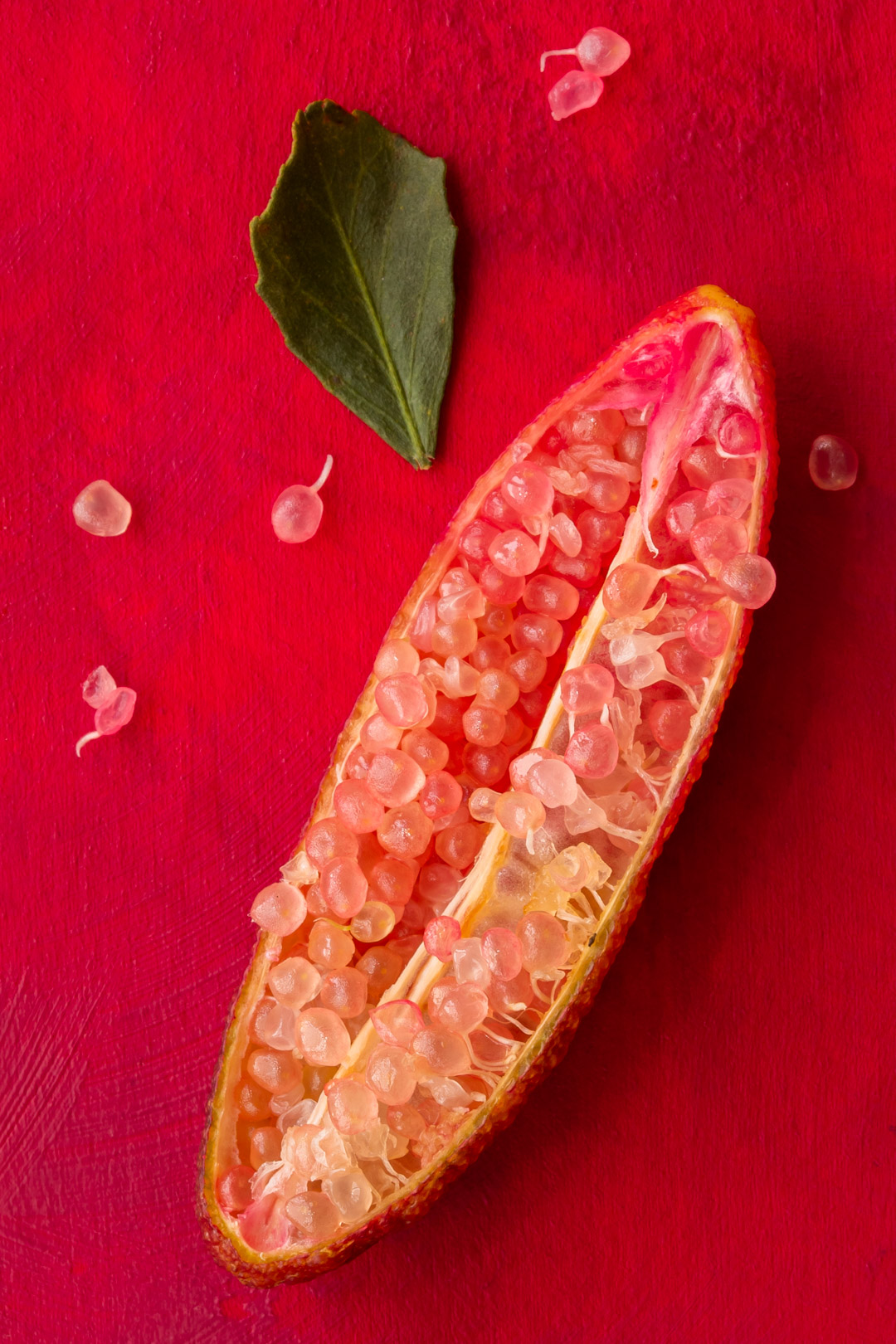
River mint & tyrant ants: Mint aroma & flavour, green colour, textural savoury bursts of tyrant ant flavour, umami flavour enhancer
River mint and tyrant ants brings a delicious refreshing mint aroma and flavour punctuated with contrasting textural savoury tyrant ants that marry well with the finger lime texture and lime flavour. Garnishing with river mint underlines and accentuates the river mint already in the gin. The tyrant ants add savoury texture and flavour enhancing umami contrast (for more on the flavour enhancing power of umami see my post on umami hot whiskey toddy using shiitake mushrooms). The river mint & tyrant ants mix is a tea made by Warndu that I have adapted for this purpose as a garnish it includes river mint, pepper mint, and edible bush food tyrant ants.
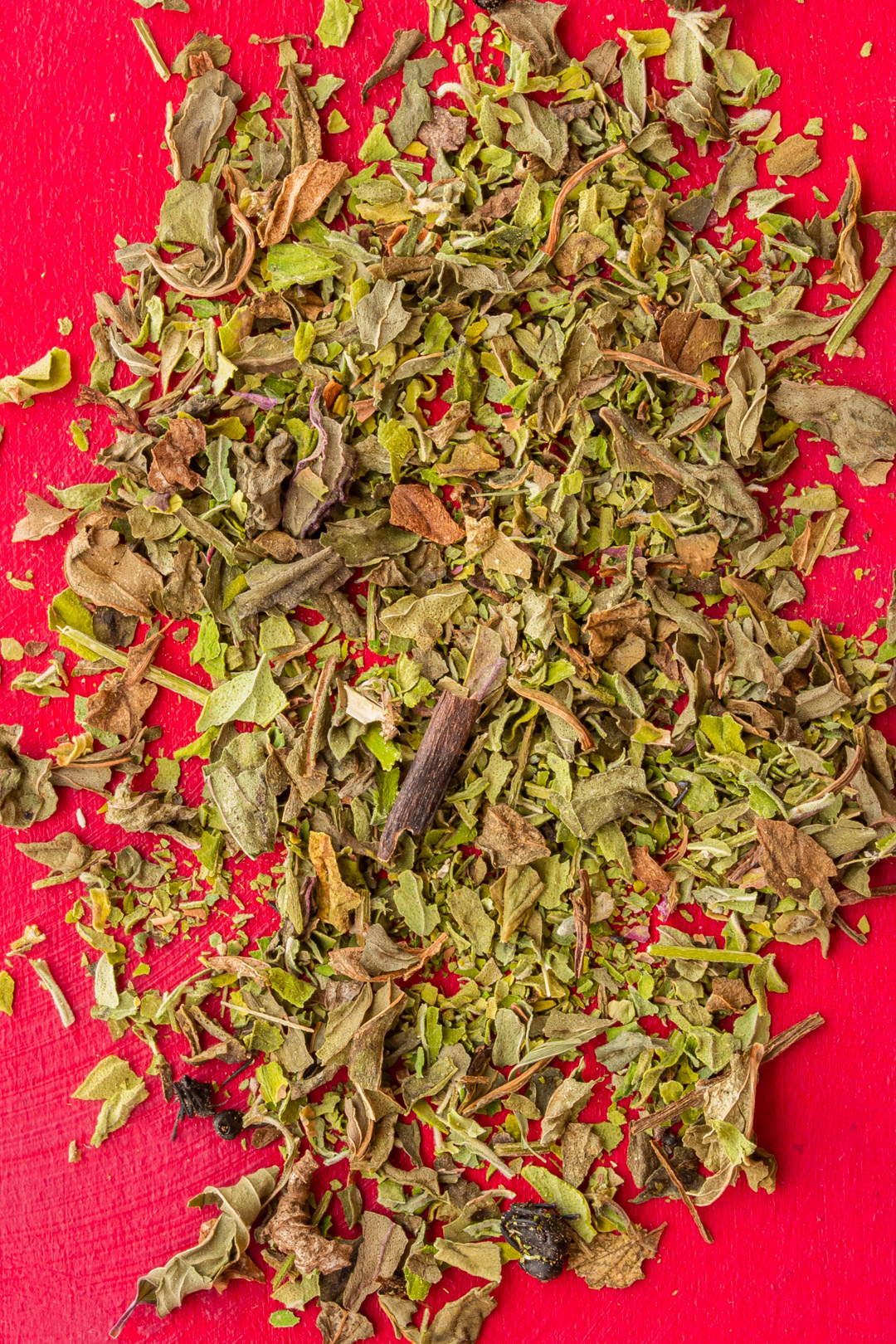
Lemon myrtle: Lemon aroma, contrasting green colour
The lemon myrtle offers supporting citrus notes bringing its own herbal lemon aroma. The lemon myrtle I dried from some I bought from Pocket City Farm last year – for more tips on what to do with lemon myrtle see my lemon myrtle honey syrup post. The dusty green of the dried lemon myrtle leaf offers a beautiful visual foil to the subtle spherical pink, red, gold and pale green finger lime caviar and links with the many shades of green in the river mint and pepper mint.
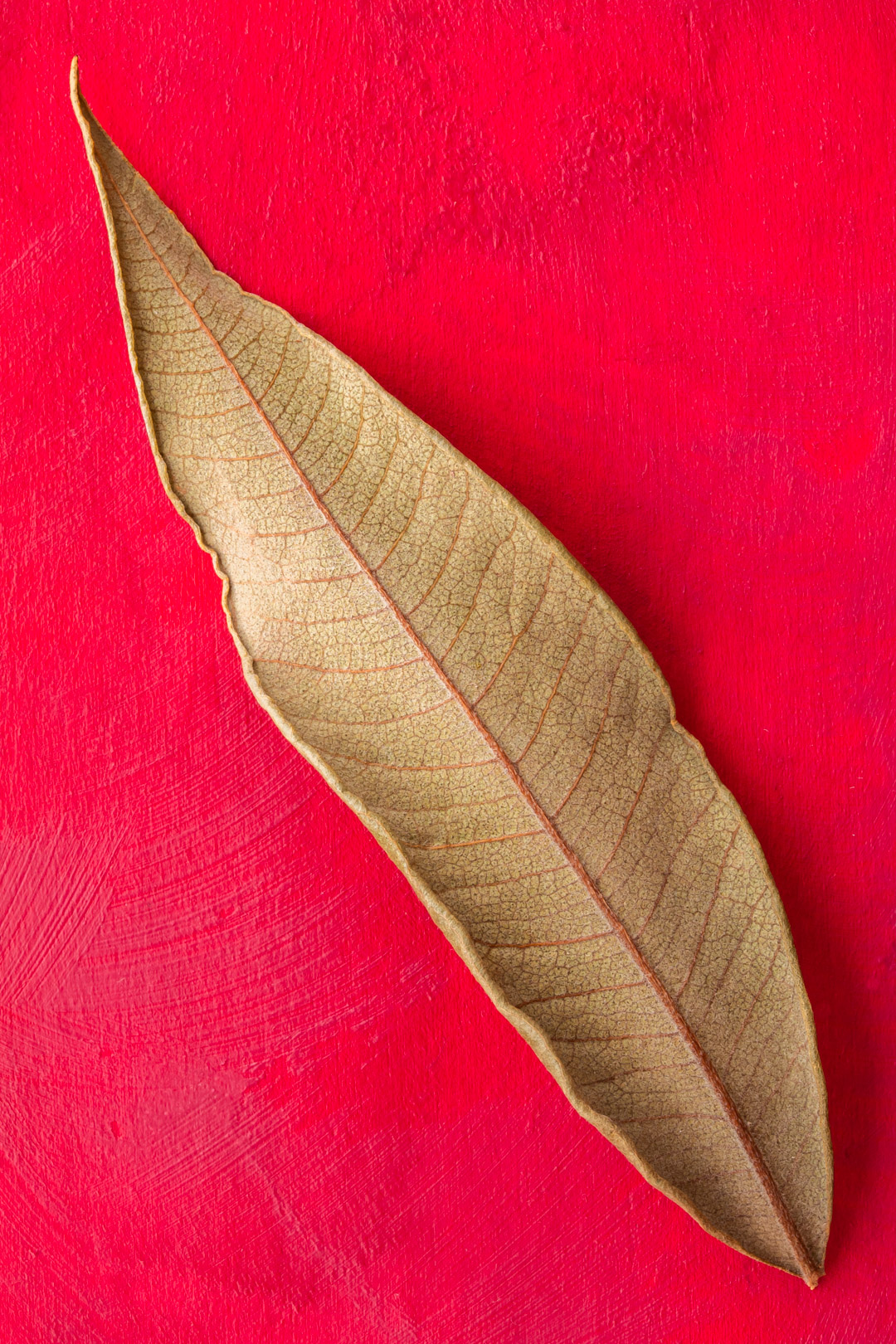
How to make a Rainforest Gin Tonica: Build in the Glass
The Rainforest Gin Tonica is built in an ice filled stemless Copa de Balon glass with gin being added first, then topped with chilled freshly opened tonic and garnishes added with a long handled bar spoon or by hand resting directly onto the ice (for garnishing tips see more below).
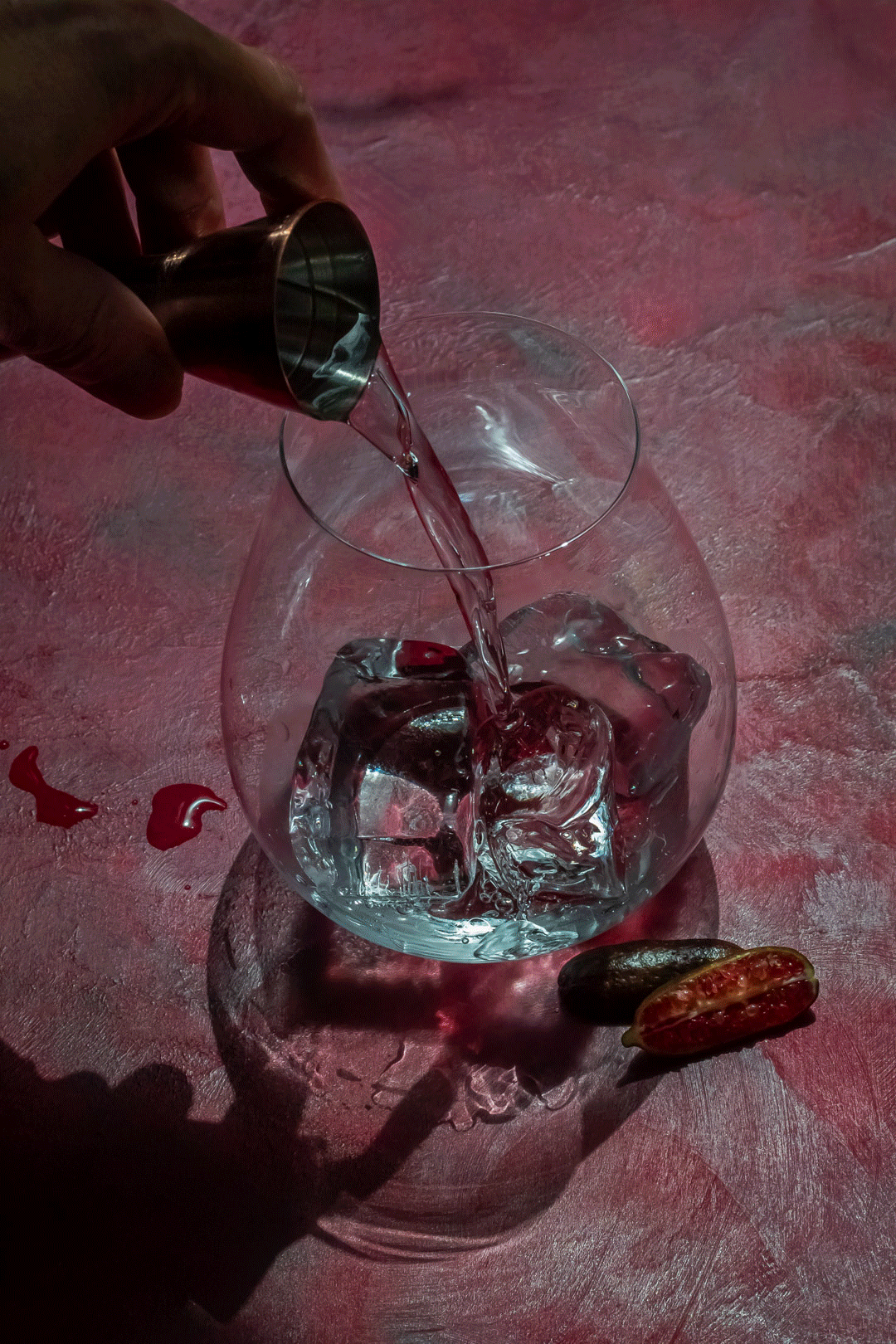
Tips: How to garnish the Rainforest Gin Tonica
Australian native botanical garnishes are added using a long handled bar spoon or by hand, resting them directly onto the ice. The bar spoon is useful for adding the finger lime caviar, which sometimes sticks to the spoon, so a gentle stir is a nice way to distribute this into the drink.
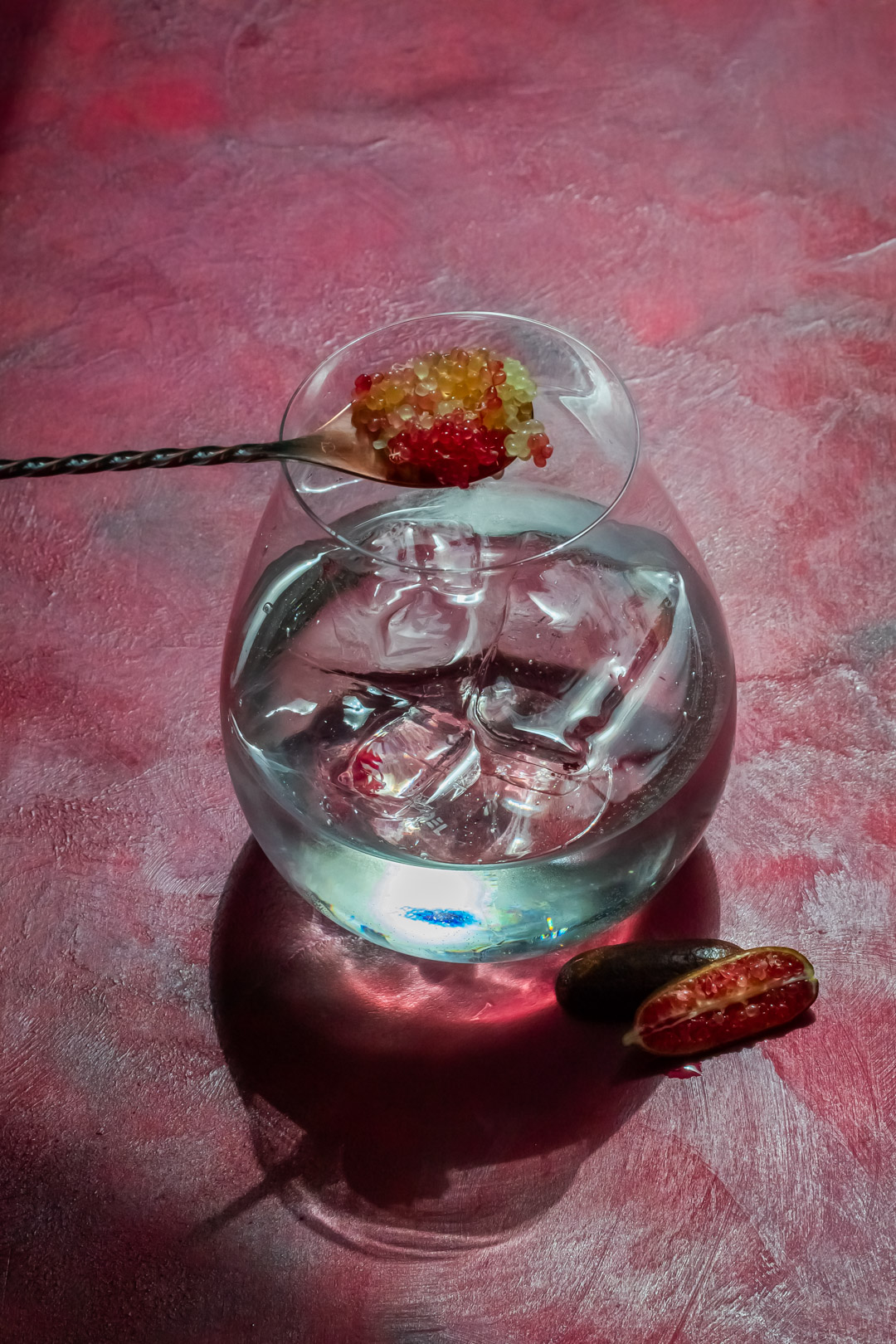
The river mint and tyrant ants can also be added with the bar spoon.
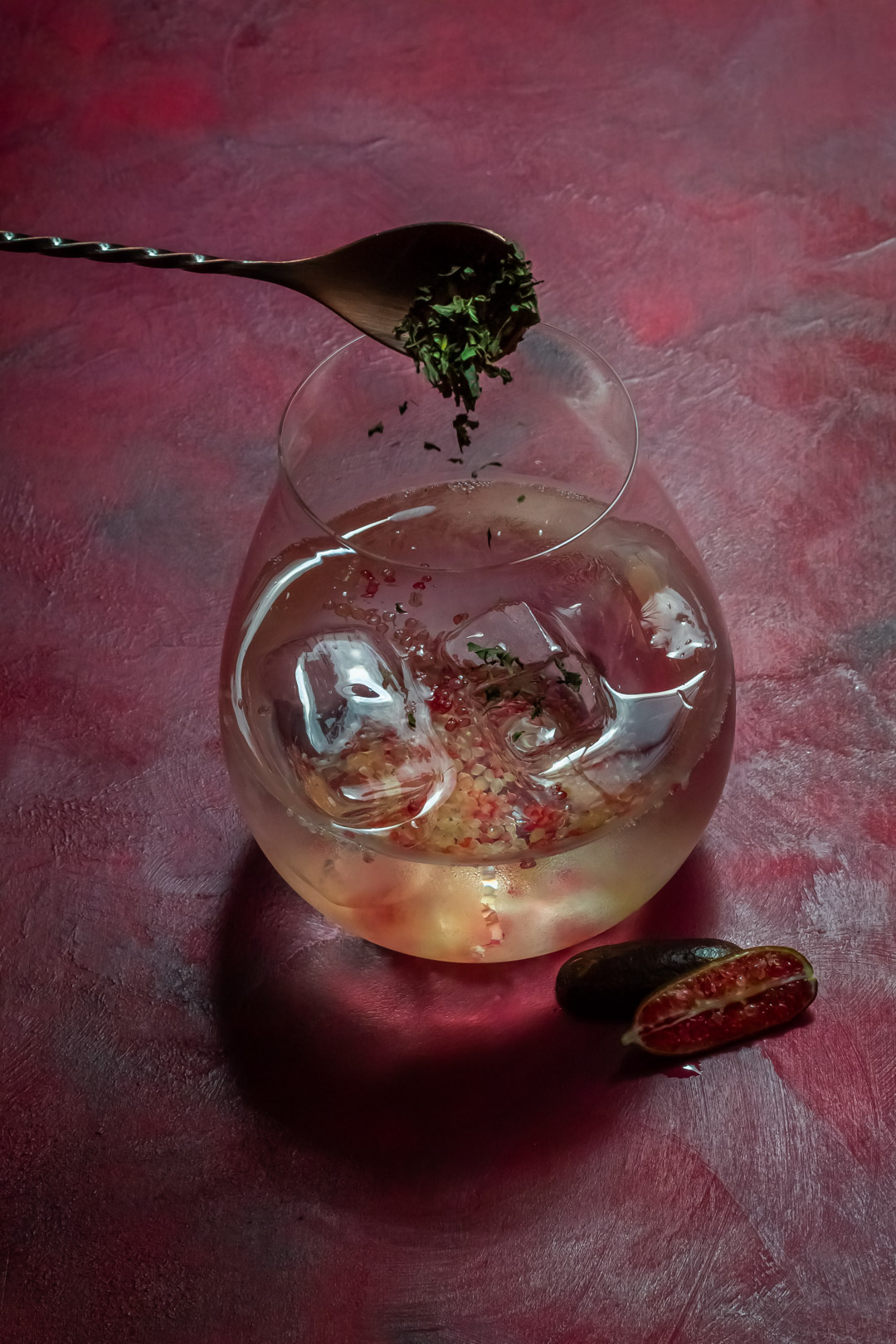
The lemon myrtle leaf can be simply placed on top of the ice.
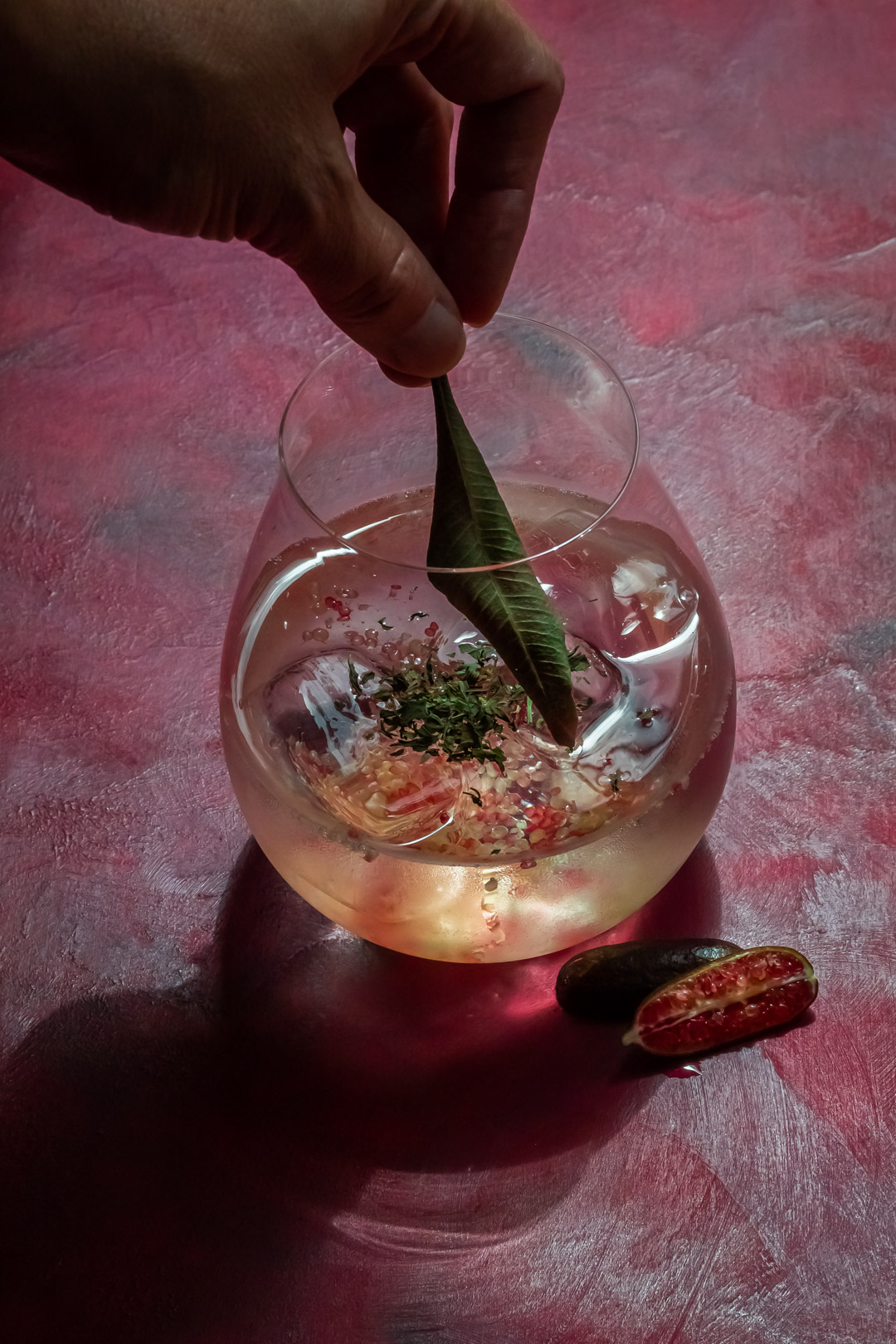
Measures & ratios for the Rainforest Gin Tonica: A template for taste & flavour experience
The Rainforest Gin Tonica recipe below offers a template for making the drink and encourages you to experiment to find the right ratio for you based on your taste and being informed by the knowledge that there are different popular ratios for the Gin Tonica including:
- Lighter style Spanish ratio 1:4 – 1.5 shots gin to from 4-6 shots tonic depending on your taste
- Stronger style American and English ratios, 1:2, 1:2.5 – 2 shots gin and up to 4-5 shots tonic to your taste
Tips on how to make clear ice
Rainforest Gin Tonica uses 3 pieces of clear ice cut from a large block of clear ice. I made this clear ice using the method outlined by Dave Arnold (2014) in Liquid Intelligence. It is easier to do than it seems although it did take me a few tries to work out the best way to do this in my smallish freezer space.
- I used an insulated lunch bag with a plastic lunch container inside to hold the water.
- For best results use filtered boiled water that has been poured into the lunch container while hot and allowed to cool undisturbed. Arnold (2014) explains there are less air bubbles in hot water.
- Place the cooled water inside the container and the insulated lunch box into the freezer.
- It took about 2 days for this size block to freeze inside the container.
- I then tipped off some of the unfrozen water and was left with clear ice.
- To cut the ice: remove from the freezer and allow to temper or melt for about 10-15 minutes, depending on the heat and humidity of the day.
- Cut carefully with a sharp serrated bread knife to score the ice deeply enough to allow a section to be broken off.
- Refreeze in the freezer. Cut pieces of ice can be stored in the freezer before use in another container.
Tips on how to prepare Finger Lime Caviar
To prepare finger lime caviar simply slice a finger lime down the centre vertically from stem to tip. Use a teaspoon to lift out the spherical caviar and place in a small dish ready to be used. It is best to prepare the caviar just before use. Sometimes finger limes have an internal membrane that covers the caviar – for ease of removal of the caviar, carefully run a small sharp paring knife underneath this membrane to left it off the surface of the lime. Remove any seeds before use. For more about the flavour of finger limes and how to use them in cocktails see my post on finger lime silver sour.
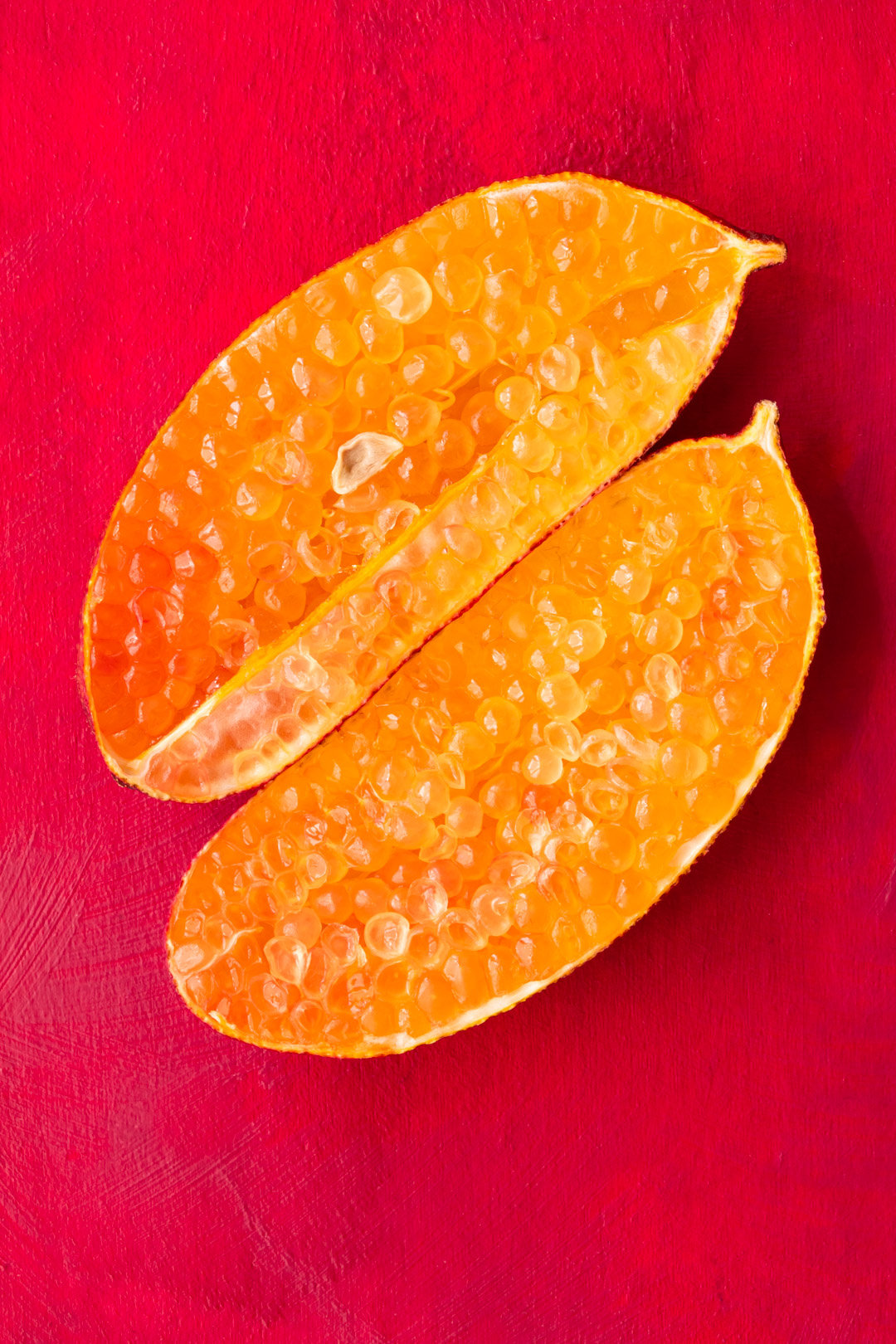
Styling and photographing the Rainforest Gin Tonica
The Rainforest Gin Tonica is styled in a stemless Copa de Balon or balloon glass to show off the garnishes, bubbles, and clear ice on which it is built. I used a textured red background that brings out the pinks and reds of the finger lime caviar and contrasts with the greens of the river mint, pepper mint and tyrant ants and lemon myrtle. The light shining through the clear drink becomes pink from the finger lime caviar adding a beautiful glow to this delicate and refreshing summer into autumn drink.
Rainforest Gin Tonica: Australian Spanish Gin Tonic
Print RecipeIngredients
- Clear ice, 3 large pieces (for tips on how to make clear ice see above)
- 1 ½ - 2 shots Brookie's Byron Dry Gin to taste (lighter drink 1 ½ shots, stronger drink 2 shots)
- Capi Tonic Water - chilled, to top, to taste (as a guide if using 1 ½ shots Gin, use from 4 shots for a stronger drink and up to 6 shots or more to taste; for 2 shots Gin use from 4-5 shots or more to taste)
- Glassware: Copa de Balon, Red Wine, Old Fashioned
- Garnish: 1-2 bar spoons finger lime caviar, 1 bar spoon river mint & ants tea mix, 1 dried or fresh lemon myrtle leaf
Instructions
Prepare finger lime caviar by slicing finger lime down centre vertically and removing caviar with teaspoon to a small dish (if membrane covers caviar use a small paring knife to lift this for ease of removing caviar, remove and discard any seeds) - prepare 1-2 bar spoons of caviar
Assemble other garnishes, 1 bar spoon river mint & ant tea and 1 dried or fresh lemon myrtle leaf
Add clear ice to a Copa de Balon, Red Wine or Old Fashioned glass
Add gin to the glass along with the ice
Top with chilled tonic water
Garnish with finger lime caviar, river mint & ants and lemon myrtle using a long handled bar spoon to gently lift the caviar into the drink and stir to dislodge from the spoon, sprinkle over the river mint & ants with bar spoon, place lemon myrtle leaf on top of ice
Notes
Clear Ice
Dave Arnold (2014). Liquid Intelligence: The Art and Science of the Perfect Cocktail. W.W. Norton & Company: New York & London.
Online Gin Tonica Recipes
Jose Andres (accessed 2021). How to make a Spanish Gin-Tonic. In Mercado Little Spain.
Jose Andres (accessed 2021). The ultimate Gin & Tonic. In Mercado Little Spain.
Australian Bartender (2015). Here’s 9 Gin Tonica Recipes for you to make. In Australian Bartender.
Simon Difford (accessed 2021). Gin Tonica. In Difford’s Guide.
Emma Janzen (2016). The Spanish Gin and Tonic Jumps the Atlantic. In Imbibe.
Nonna Titulauri (2020). Spanish Gin & Tonic. In Liquor.com.
Copa de Balon Glassware
Amy Willis (2016). What is a Copa de Balon Glass and why it is essential for a gin & tonic. In Metro.
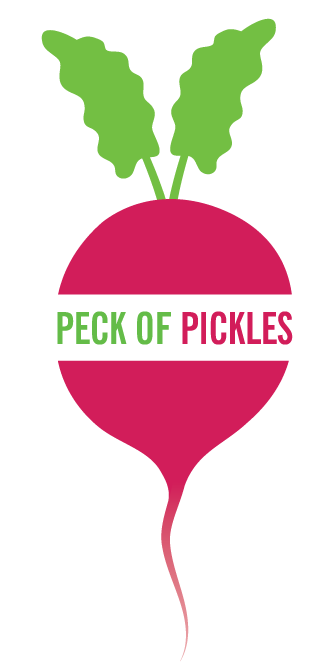
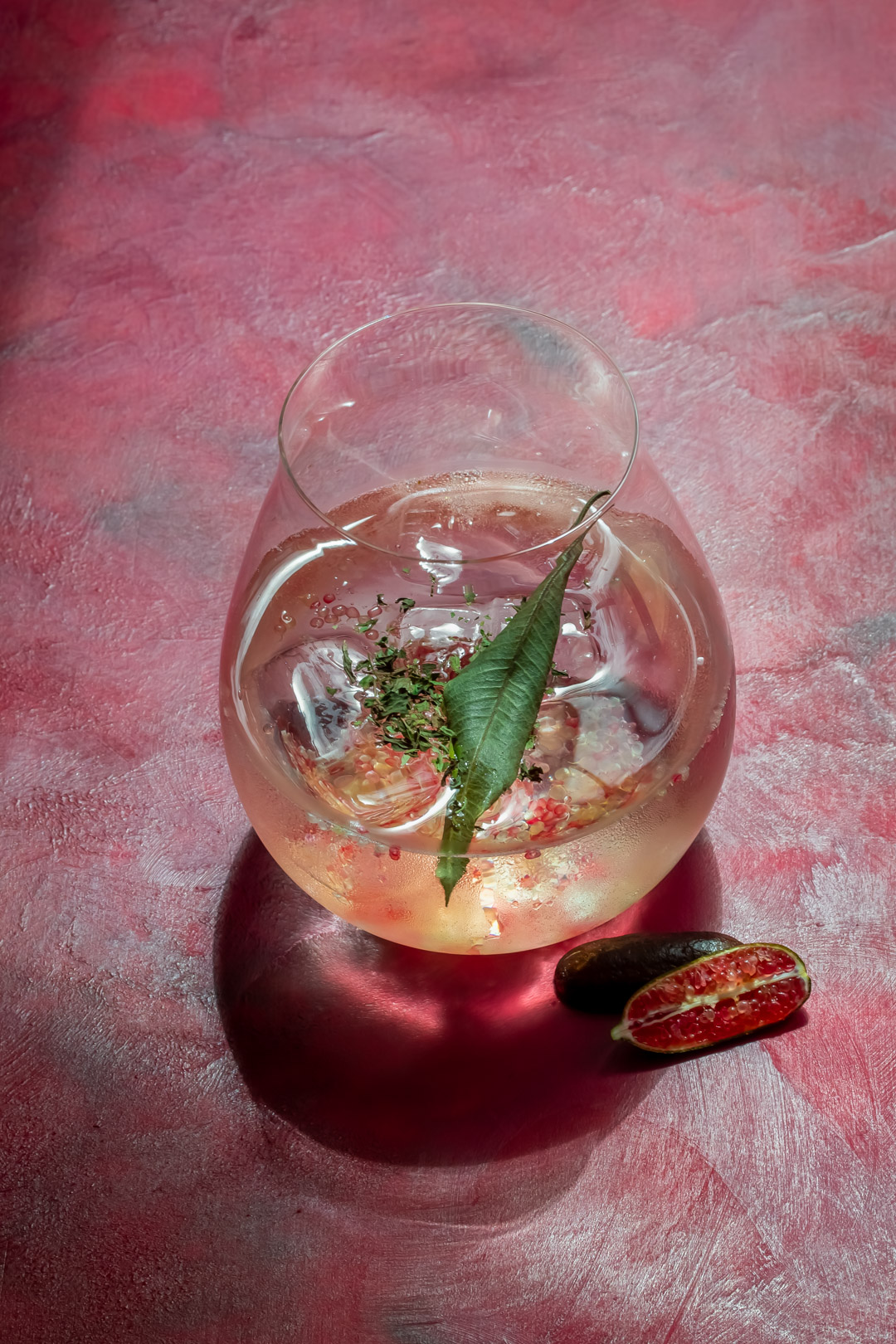
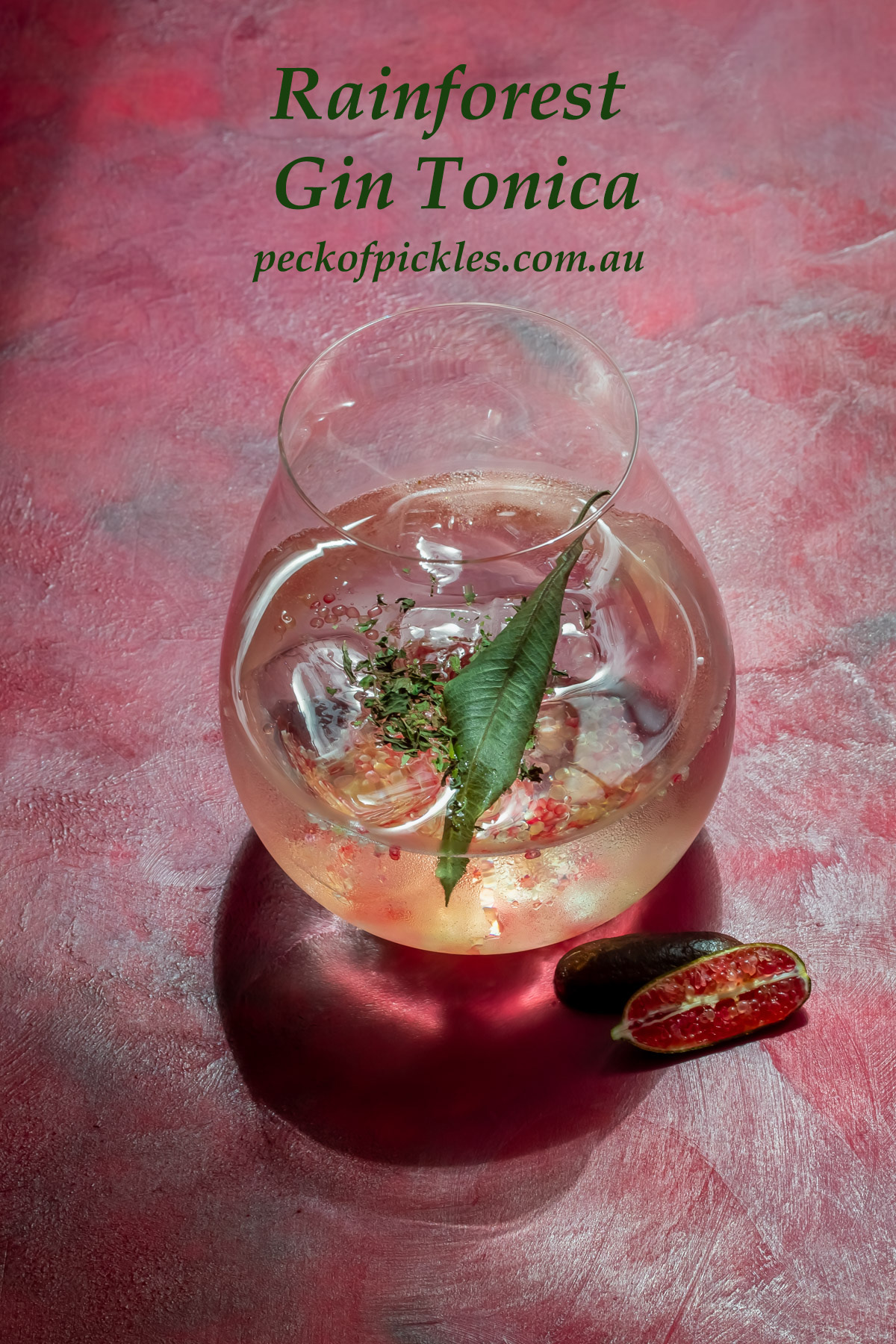
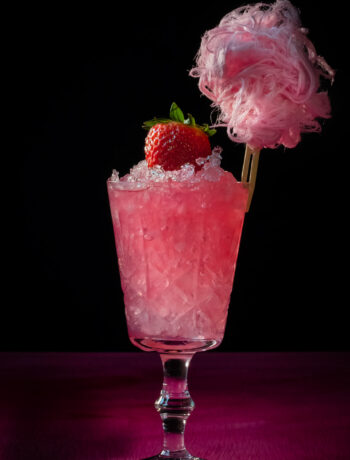
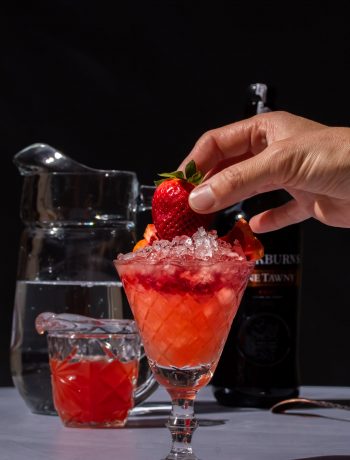
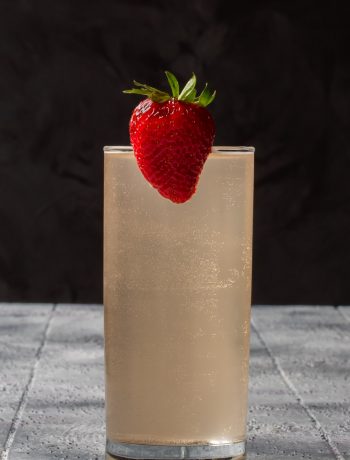
No Comments